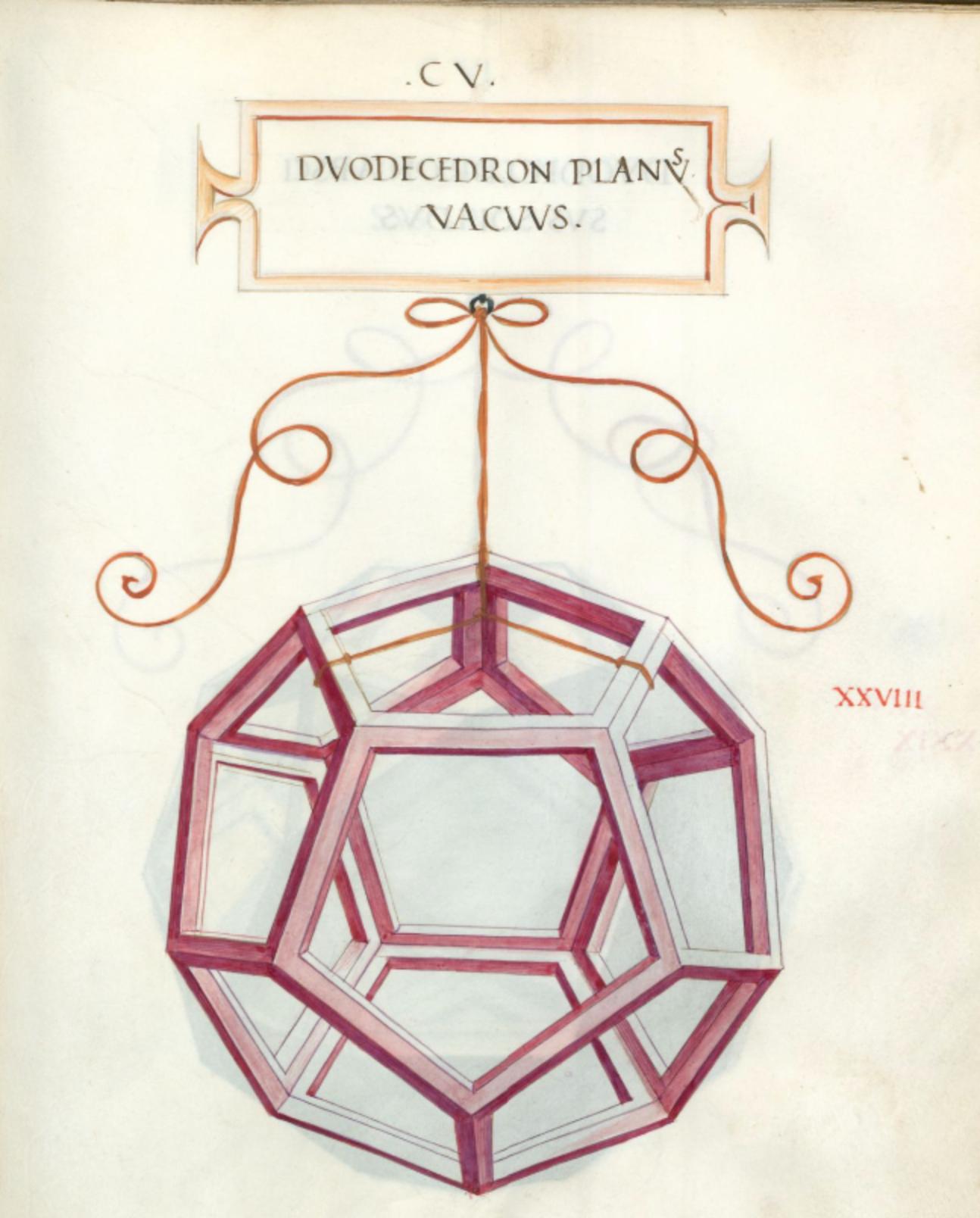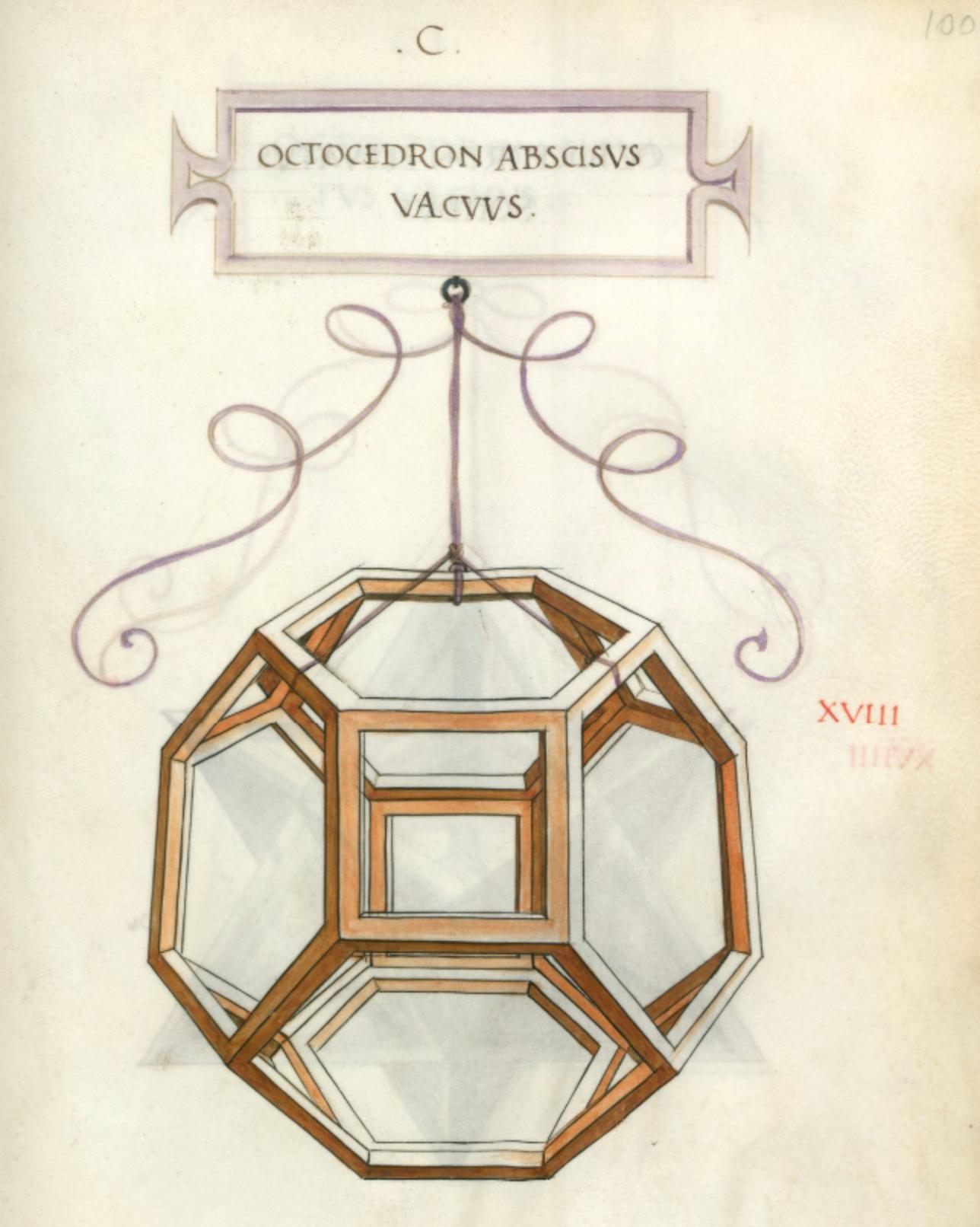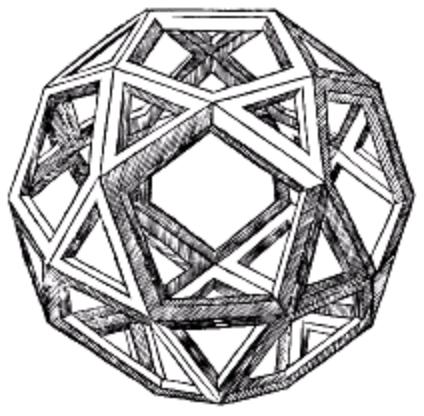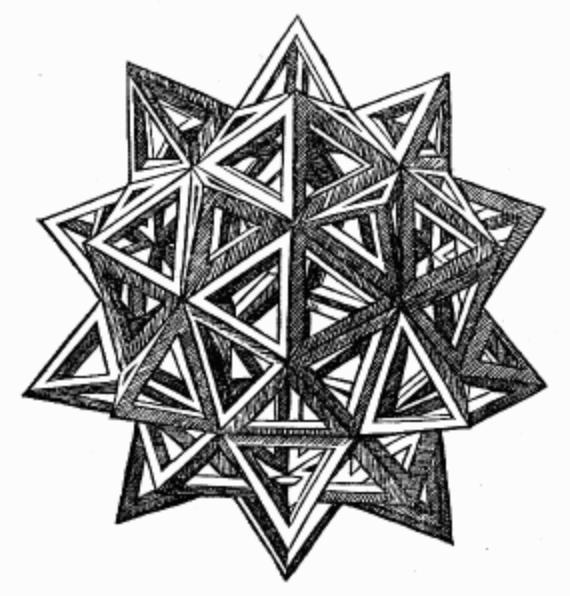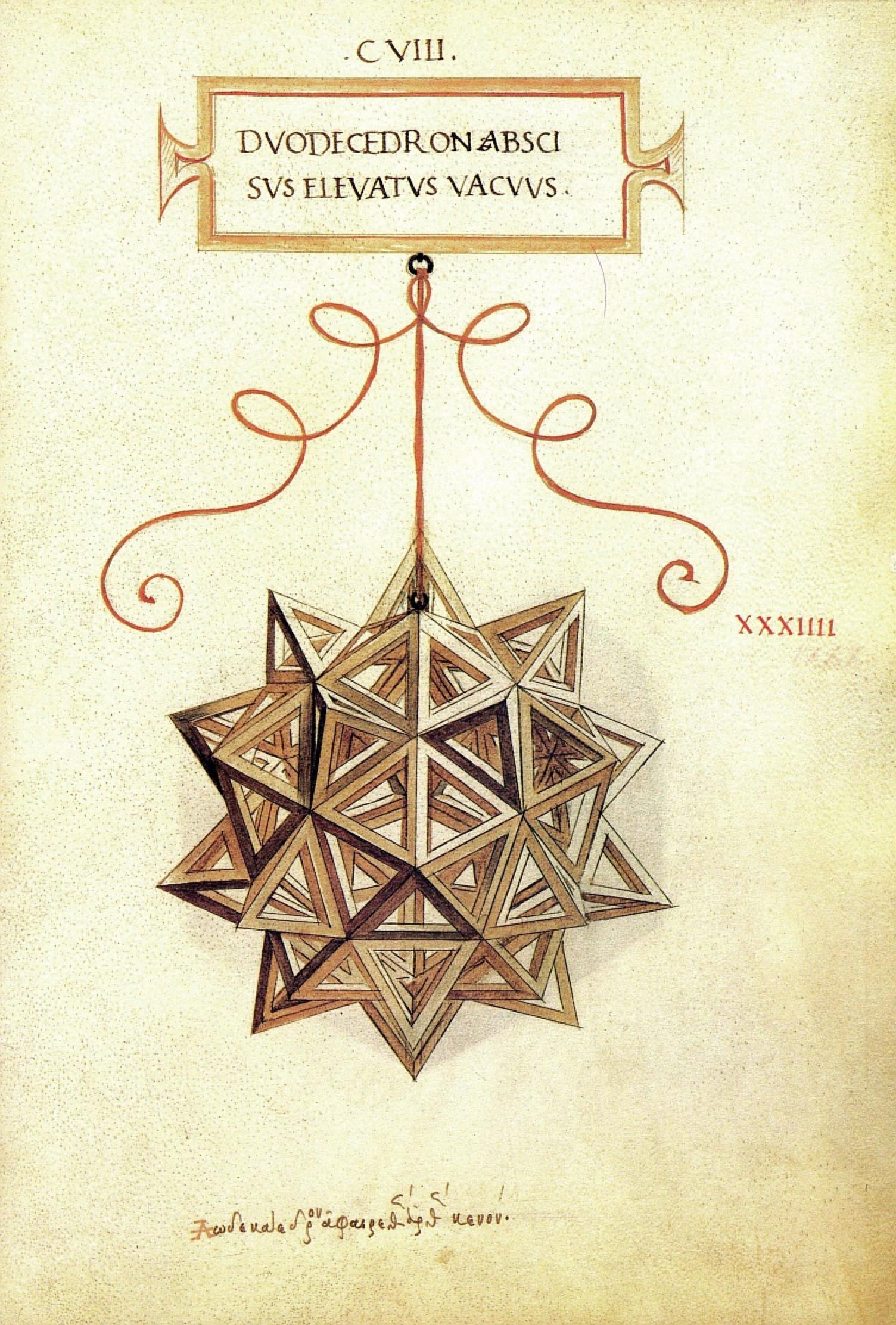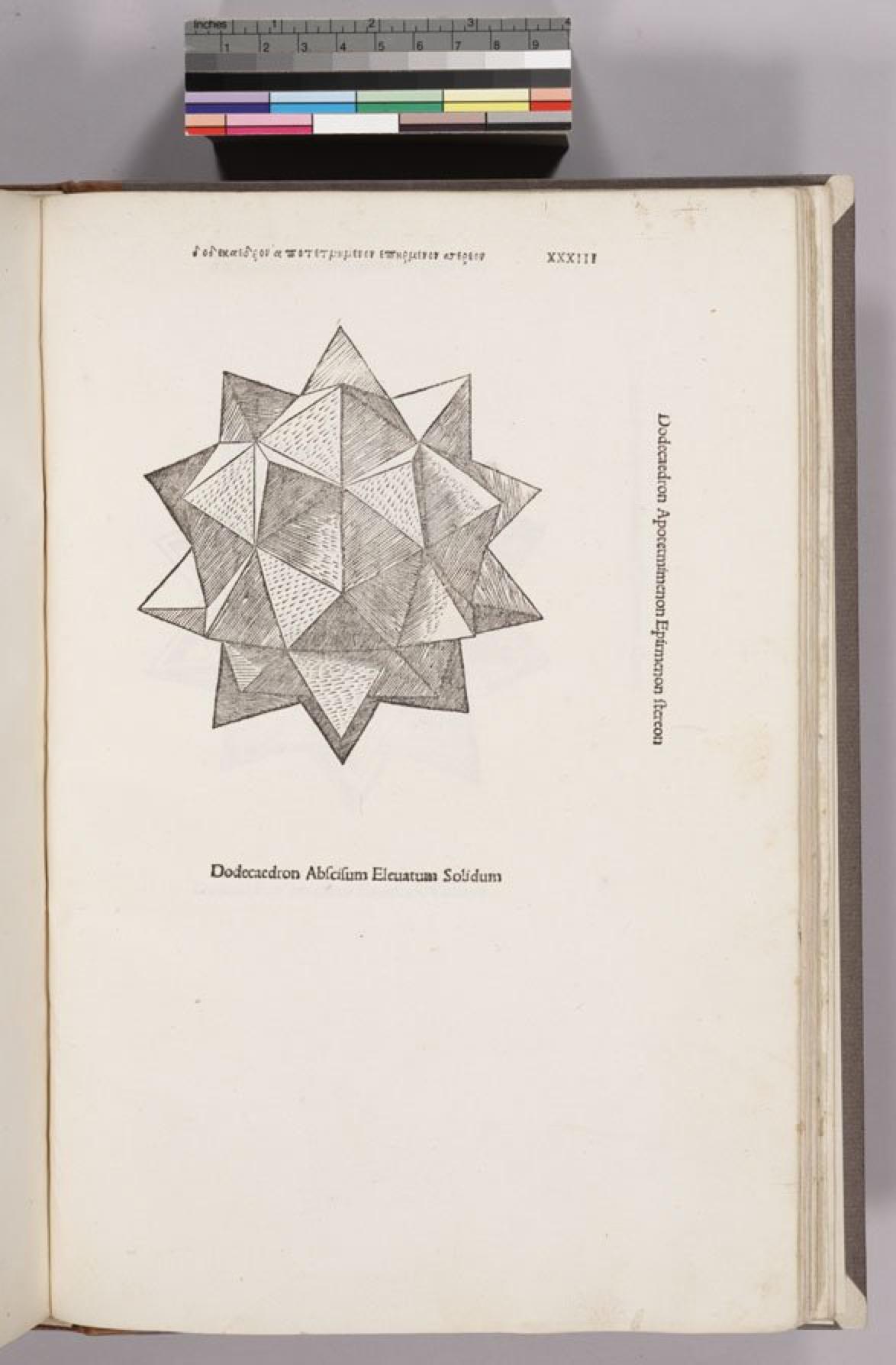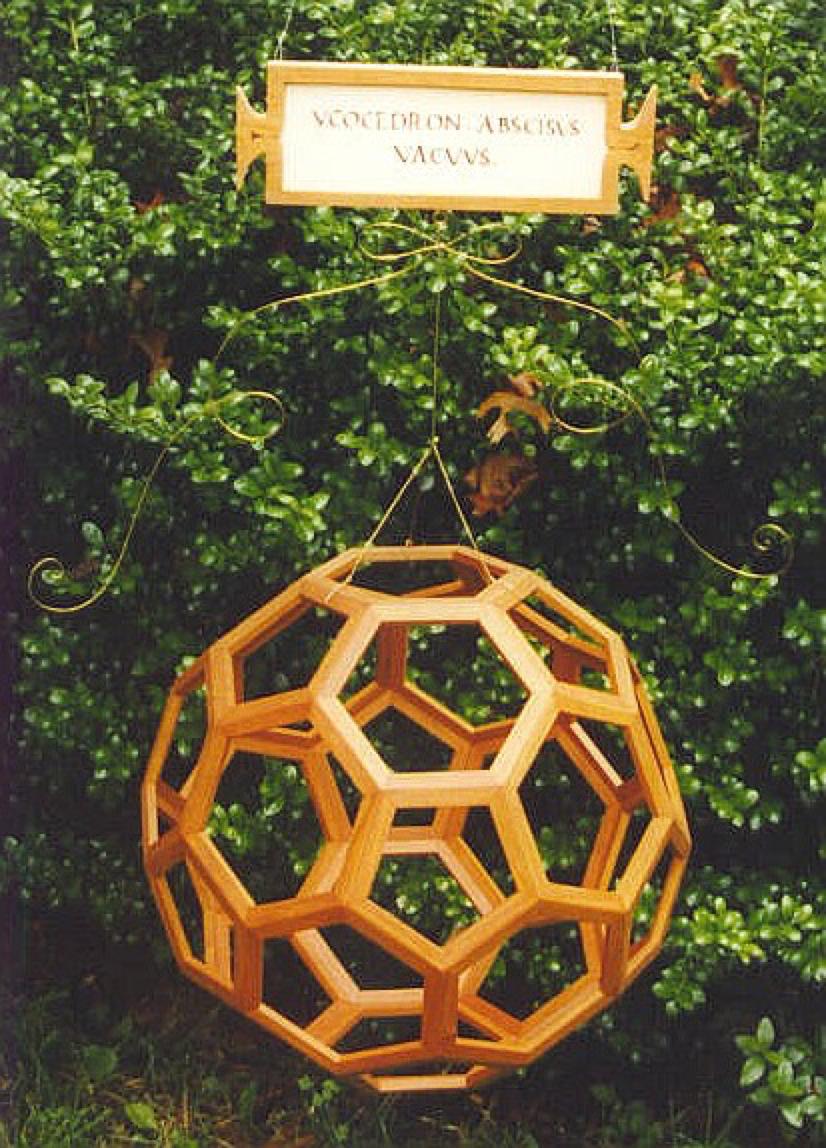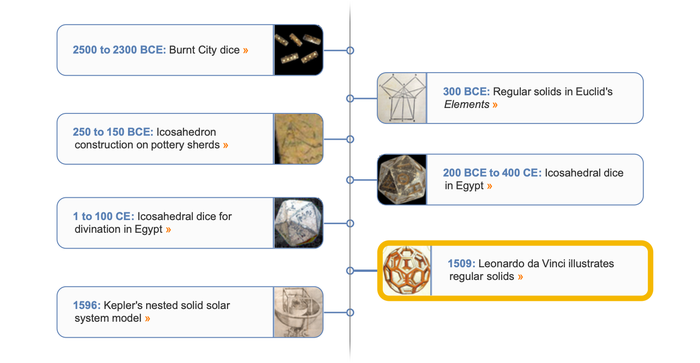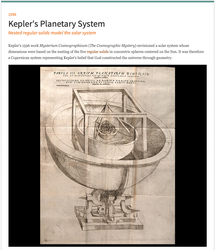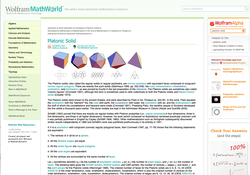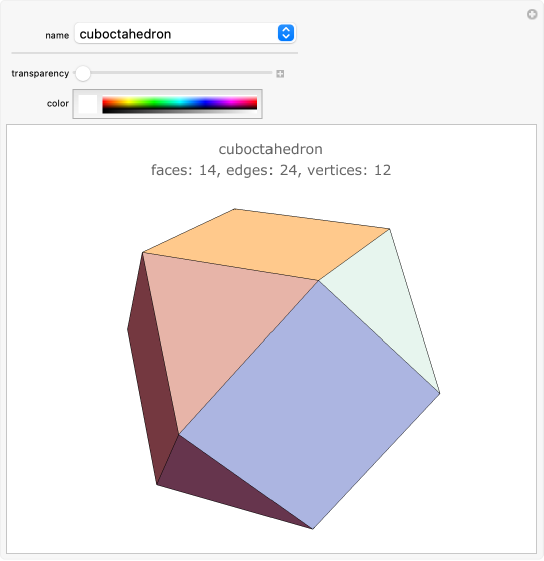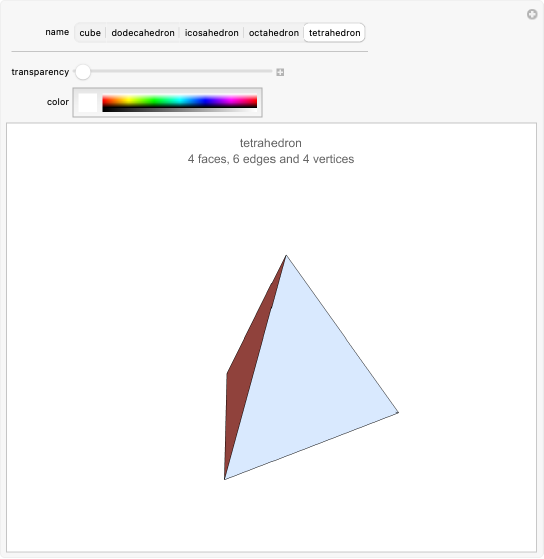1509
Da Vinci's Polyhedra
Divinely illustrated polyhedra
Da Vinci briefly studied geometry with Pacioli, but was primarily interested in their descriptive features and with representing them artistically. Da Vinci produced 60 plates of polyhedral illustrations for Pacioli's work De divina proportione.

Italian mathematician and Franciscan friar Luca Pacioli was a polyhedron enthusiast who studied their properties and constructed many wooden models. Leonardo da Vinci produced 60 plates of polyhedral illustrations for Pacioli's work De divina proportione about mathematical and artistic proportion, written in Milan in 1496–1498 and published in Venice in 1509. Most of da Vinci's illustrations occur in pairs of contrasting models: one with solid faces and the other with solid edges. These are the first illustrations of polyhedra represented using solid edges. Just two copies of the original manuscript are known: one sits in the Biblioteca Ambrosiana in Milan, while the other is housed in the Bibliothèque de Genève.
